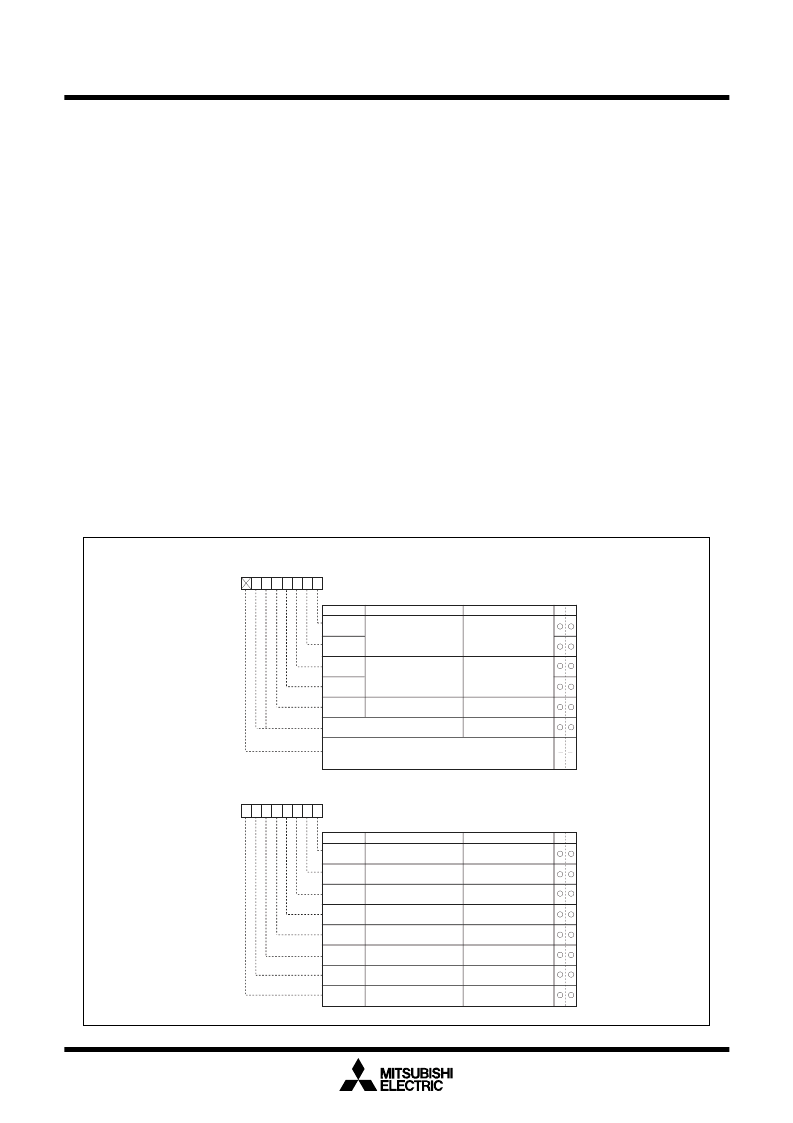- 您現(xiàn)在的位置:買賣IC網(wǎng) > PDF目錄370830 > M30220MA-101RP (Mitsubishi Electric Corporation) SINGLE-CHIP 16-BIT CMOS MICROCOMPUTER PDF資料下載
參數(shù)資料
| 型號(hào): | M30220MA-101RP |
| 廠商: | Mitsubishi Electric Corporation |
| 英文描述: | SINGLE-CHIP 16-BIT CMOS MICROCOMPUTER |
| 中文描述: | 單片16位CMOS微機(jī) |
| 文件頁(yè)數(shù): | 45/212頁(yè) |
| 文件大小: | 2891K |
| 代理商: | M30220MA-101RP |
第1頁(yè)第2頁(yè)第3頁(yè)第4頁(yè)第5頁(yè)第6頁(yè)第7頁(yè)第8頁(yè)第9頁(yè)第10頁(yè)第11頁(yè)第12頁(yè)第13頁(yè)第14頁(yè)第15頁(yè)第16頁(yè)第17頁(yè)第18頁(yè)第19頁(yè)第20頁(yè)第21頁(yè)第22頁(yè)第23頁(yè)第24頁(yè)第25頁(yè)第26頁(yè)第27頁(yè)第28頁(yè)第29頁(yè)第30頁(yè)第31頁(yè)第32頁(yè)第33頁(yè)第34頁(yè)第35頁(yè)第36頁(yè)第37頁(yè)第38頁(yè)第39頁(yè)第40頁(yè)第41頁(yè)第42頁(yè)第43頁(yè)第44頁(yè)當(dāng)前第45頁(yè)第46頁(yè)第47頁(yè)第48頁(yè)第49頁(yè)第50頁(yè)第51頁(yè)第52頁(yè)第53頁(yè)第54頁(yè)第55頁(yè)第56頁(yè)第57頁(yè)第58頁(yè)第59頁(yè)第60頁(yè)第61頁(yè)第62頁(yè)第63頁(yè)第64頁(yè)第65頁(yè)第66頁(yè)第67頁(yè)第68頁(yè)第69頁(yè)第70頁(yè)第71頁(yè)第72頁(yè)第73頁(yè)第74頁(yè)第75頁(yè)第76頁(yè)第77頁(yè)第78頁(yè)第79頁(yè)第80頁(yè)第81頁(yè)第82頁(yè)第83頁(yè)第84頁(yè)第85頁(yè)第86頁(yè)第87頁(yè)第88頁(yè)第89頁(yè)第90頁(yè)第91頁(yè)第92頁(yè)第93頁(yè)第94頁(yè)第95頁(yè)第96頁(yè)第97頁(yè)第98頁(yè)第99頁(yè)第100頁(yè)第101頁(yè)第102頁(yè)第103頁(yè)第104頁(yè)第105頁(yè)第106頁(yè)第107頁(yè)第108頁(yè)第109頁(yè)第110頁(yè)第111頁(yè)第112頁(yè)第113頁(yè)第114頁(yè)第115頁(yè)第116頁(yè)第117頁(yè)第118頁(yè)第119頁(yè)第120頁(yè)第121頁(yè)第122頁(yè)第123頁(yè)第124頁(yè)第125頁(yè)第126頁(yè)第127頁(yè)第128頁(yè)第129頁(yè)第130頁(yè)第131頁(yè)第132頁(yè)第133頁(yè)第134頁(yè)第135頁(yè)第136頁(yè)第137頁(yè)第138頁(yè)第139頁(yè)第140頁(yè)第141頁(yè)第142頁(yè)第143頁(yè)第144頁(yè)第145頁(yè)第146頁(yè)第147頁(yè)第148頁(yè)第149頁(yè)第150頁(yè)第151頁(yè)第152頁(yè)第153頁(yè)第154頁(yè)第155頁(yè)第156頁(yè)第157頁(yè)第158頁(yè)第159頁(yè)第160頁(yè)第161頁(yè)第162頁(yè)第163頁(yè)第164頁(yè)第165頁(yè)第166頁(yè)第167頁(yè)第168頁(yè)第169頁(yè)第170頁(yè)第171頁(yè)第172頁(yè)第173頁(yè)第174頁(yè)第175頁(yè)第176頁(yè)第177頁(yè)第178頁(yè)第179頁(yè)第180頁(yè)第181頁(yè)第182頁(yè)第183頁(yè)第184頁(yè)第185頁(yè)第186頁(yè)第187頁(yè)第188頁(yè)第189頁(yè)第190頁(yè)第191頁(yè)第192頁(yè)第193頁(yè)第194頁(yè)第195頁(yè)第196頁(yè)第197頁(yè)第198頁(yè)第199頁(yè)第200頁(yè)第201頁(yè)第202頁(yè)第203頁(yè)第204頁(yè)第205頁(yè)第206頁(yè)第207頁(yè)第208頁(yè)第209頁(yè)第210頁(yè)第211頁(yè)第212頁(yè)

INT Interrupt
Unde
deeopmen
Preliminary Specifications REV.E
Specifications in this manual are tentative and subject to change.
Mitsubishi microcomputers
M30220 Group
SINGLE-CHIP 16-BIT CMOS MICROCOMPUTER
45
______
________
Of interrupt control registers, 0058
16
is used both as timer A3 and external interrupt INT4 input control register, and
0059
16
is used both as timer A4 and as external interrupt INT5 input control register. Use the interrupt request cause
select bits - bits 6 and 7 of the interrupt request cause select register 1 (address 035F
16
) - to specify which interrupt
request cause to select. When INT4 is selected as an interrupt source, the input port for it can be selected by bits 0 and
1 of the interrupt source select register 0 (address 035E
16
). Similarly, when INT5 is selected as an interrupt source, the
input port for it can be selected by bits 2 and 3 of the interrupt source select register 0 (address 035E
16
). After having
set an interrupt request cause and interrupt input ports, be sure to set the corresponding interrupt request bit to “0”
before enabling an interrupt.
Either of the interrupt control registers - 0058
16
, 0059
16
- has the polarity-switching bit. Be sure to set this bit to “0” to
select an timer as the interrupt request cause.
As for external interrupt input, an interrupt can be generated both at the rising edge and at the falling edge by setting
“1” in the INTi interrupt polarity switching bit of the interrupt request cause select register 1 (035F
16
). To select two
edges, set the polarity switching bit of the corresponding interrupt control register to ‘falling edge’ (“0”).
When INT4 input pin select bits = “11”, INT4 interrupt polarity switching bit = “0”, and polarity select bit = “1” of the INT4
interrupt control register, an interrupt is generated by a rising edge on the input port when the exclusive pin is “H”, as
shown by “Single edge, Rise” in Figure 1.10.12. When the exclusive pin is “H”, interrupts can only be generated by an
active transition on a single edge. The same applies to INT5.
Figure 1.10.10 shows the interrupt request cause select register.
________
Figure 1.10.10. Interrupt request cause select registers 0, 1
Interrupt request cause select register 1
AAA
Bit name
Function
Bit
IFSR10
R
Symbol
IFSR1
Address
035F
16
When reset
00
16
b7
b6
b5
b4
b3
b2
b1
b0
AAA
INT0 interrupt polarity
switching bit
0 : Timer A3
0 : Timer A4
0 : One edge
1 : Two edges
0 : One edge
1 : Two edges
0 : One edge
1 : Two edges
0 : One edge
0 : One edge
INT1 interrupt polarity
switching bit
INT2 interrupt polarity
switching bit
INT3 interrupt polarity
INT4 interrupt polarity
INT5 interrupt polarity
switching bit
0 : One edge
1 : Two edges
Interrupt request cause
Interrupt request cause
IFSR11
IFSR12
IFSR13
IFSR14
IFSR15
IFSR16
IFSR17
A
AA
AA
AA
AA
AA
A
A
A
A
A
A
A
A
Interrupt request cause select register 0
AAA
Bit name
Function
IFSR00
W
R
Symbol
IFSR0
Address
035E
16
When reset
X0000000
2
b7
b6
b5
b4
b3
b2
b1
b0
AAA
INT4 input pin select bit
00: No INT4 input
01: P4
6
input enabled
10: P4
7
input enabled
11: P4
6
, P4
7
input enabled
0 : Timer A5
1 :
Bus collision detection
INT5 input pin select bit
Interrupt request cause
Reserved bit
Must always be set to “0”
IFSR01
IFSR02
IFSR03
IFSR04
AA
AA
AA
AA
AA
00: No INT5 input
01: P8
0
input enabled
10: P8
1
input enabled
11: P8
0
, P8
1
input enabled
Nothing is assigned.
In an attempt to write to this bit, write “0”. The value, if read, turns out
to be
indeterminate.
AA
相關(guān)PDF資料 |
PDF描述 |
|---|---|
| M30220 | SINGLE-CHIP 16-BIT CMOS MICROCOMPUTER |
| M30220FA | SINGLE-CHIP 16-BIT CMOS MICROCOMPUTER |
| M30220FC | SINGLE-CHIP 16-BIT CMOS MICROCOMPUTER |
| M30220FCGP | SINGLE-CHIP 16-BIT CMOS MICROCOMPUTER |
| M30220FCRP | SINGLE-CHIP 16-BIT CMOS MICROCOMPUTER |
相關(guān)代理商/技術(shù)參數(shù) |
參數(shù)描述 |
|---|---|
| M30220MA-XXXGP | 制造商:RENESAS 制造商全稱:Renesas Technology Corp 功能描述:SINGLE-CHIP 16-BIT CMOS MICROCOMPUTER |
| M30220MA-XXXRP | 制造商:RENESAS 制造商全稱:Renesas Technology Corp 功能描述:SINGLE-CHIP 16-BIT CMOS MICROCOMPUTER |
| M30220MC | 制造商:MITSUBISHI 制造商全稱:Mitsubishi Electric Semiconductor 功能描述:SINGLE-CHIP 16-BIT CMOS MICROCOMPUTER |
| M30220MX-XXXGP | 制造商:RENESAS 制造商全稱:Renesas Technology Corp 功能描述:SINGLE-CHIP 16-BIT CMOS MICROCOMPUTER |
| M30220MX-XXXRP | 制造商:RENESAS 制造商全稱:Renesas Technology Corp 功能描述:SINGLE-CHIP 16-BIT CMOS MICROCOMPUTER |
發(fā)布緊急采購(gòu),3分鐘左右您將得到回復(fù)。